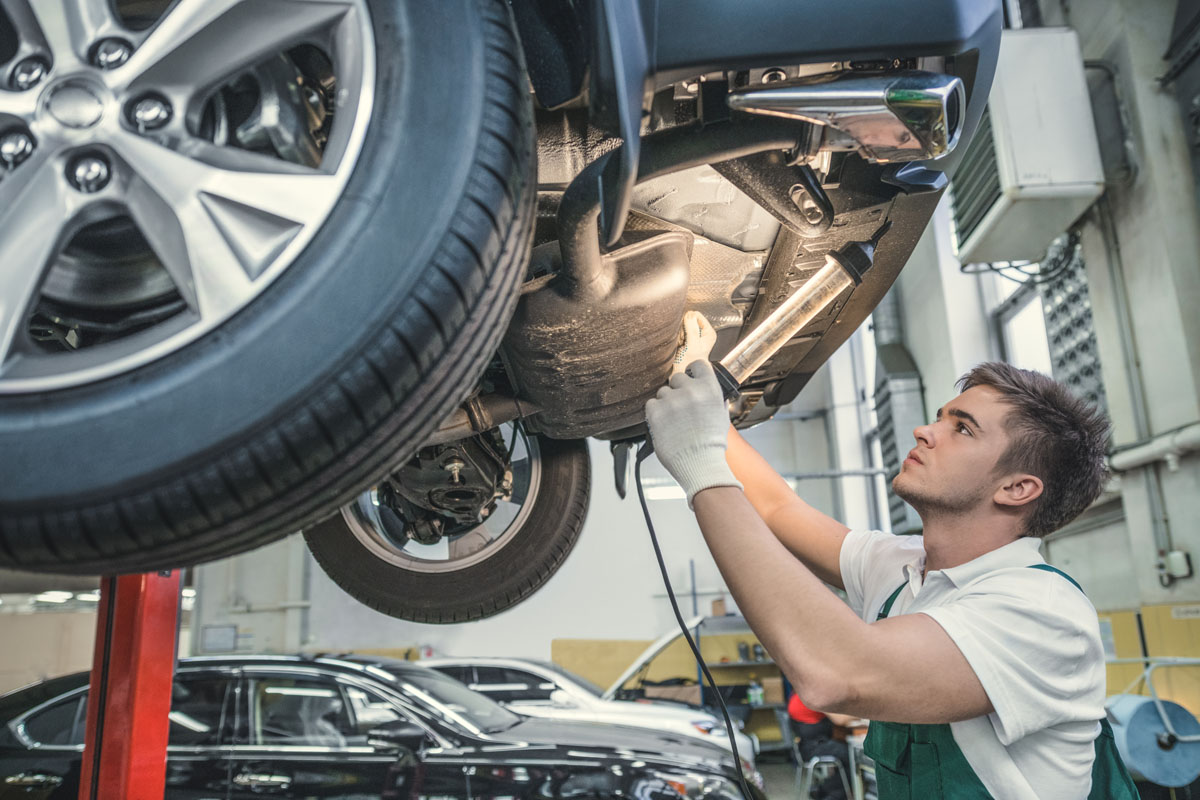Asbestos has been a component in linings, clutch facings, and brakes pads for a long time and millions of them on the shelf of an auto parts store or operating in vehicles can still be found today. That said they are not normally used in the production of new components. Read on to learn more.
Hazards
As clutches and brakes wear down through regular usage, dust containing asbestos is released into the outside environment as well as getting trapped within the vehicle housing to be released when those areas are being worked on. Asbestos dust is also spread further by using a vacuum cleaner to sweep up the break residue and in a similar way to use compressed air.
Therefore, it should be obvious that mechanics are at high risk for asbestos exposure. Cleaning drum brakes can release asbestos fibers by the million around the face of a mechanic, even striking a brake drum with an object like a hammer can cause the release of asbestos fibers. It can get on their hands and be swallowed as well. Asbestos lingers once it is in the air and can be inhaled by customers as well as mechanics. Not to mention the dust will remain on their clothes, endangering other people they may meet.
Minimizing Dangers
Government regulations state any shop that does in excess of five brake jobs per year must use special equipment so asbestos exposure is minimized. These include a see-through enclosure surrounding the brake system and a vacuum with a HEPA filter. Another method is low-pressure sprays used to wet down the brake assembly and the water runoff when collected. Asbestos must also be collected and sealed as well as labeled in containers that cannot be opened.
The Home Mechanic
As home auto mechanics are still a very popular pastime those who work with clutches and brakes containing asbestos are also at risk and the problem may even be more intense as they do not often have the safety equipment found in auto shops.
The SPA states at home mechanics should refrain from using compressed air to clean brakes to prevent the release of asbestos and should also use parts that are preground to avoid asbestos exposure.
Asbestos, OSHA & AHERA Training Via Classroom & Online
The Asbestos Institute has provided EPA and Cal/OSHA-accredited safety training since 1988. From OSHA 10 to hazmat training and asbestos certification, our trusted and experienced instructors make sure participants get the high-quality initial and refresher training they need.
Classroom
We train on-site at our headquarters in Phoenix, AZ or at our clients’ sites across the U.S. We offer both English and Spanish courses. Browse Classroom Classes
Online
Online courses allow you to align your learning with your personal schedule. This is a great option for students with family and work commitments. Browse Online Classes
Webinar
Live webinars allow you to watch instructors on demand from the comfort of your home or office. Learn, chat with other students, and ask questions in real-time. Browse Live Webinars
Disclaimer
The Asbestos Institute is not the official authority to determine OSHA training requirements, which are set forth in the Occupational Safety and Health Act of 1970. OSHA regulations are always being revised, added, and/or deleted, so you must not rely on The Asbestos Institute as the official authority of OSHA asbestos training requirements. Visit the official OSHA Asbestos Training Requirements page here.


